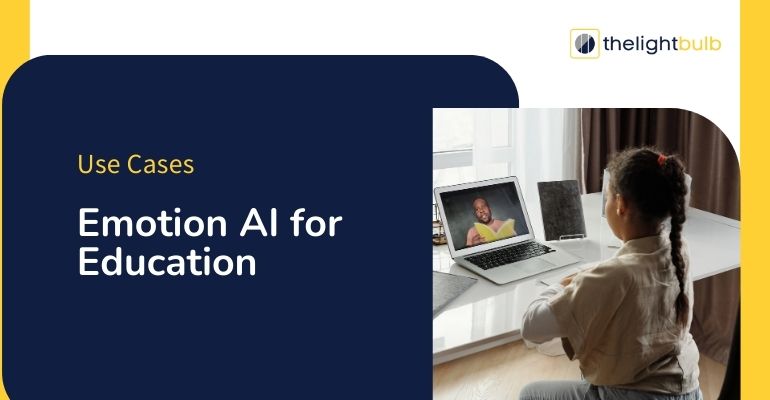
How is Emotion AI Used By Top Companies?
As technology continues to evolve, companies recognize the potential of Emotion AI. From tech giants to small startups, businesses are investing in the ability to understand human emotions through computer vision and voice analysis. Initially, many companies used Emotion AI for market research, gaining insights into consumer emotions towards products or TV commercials.
But now, companies are finding new and innovative ways to use this technology, such as in virtual personal assistants, getting customer relation insights, health care, and even on everyday devices. Gartner predicts that by 2022, a significant portion of personal devices will have Emotion AI capabilities, a stark increase from the current adoption rate. As more companies begin harnessing the power of emotion AI, it would be fascinating to learn how and where they use this technology.
So let’s dive in and understand the various use cases of Emotion AI in the real world and how companies are using it for business.
Marketing

With the rise of Emotion AI, companies are now leveraging human emotions in marketing like never before. By using advanced algorithms and data analysis, Emotion AI enables businesses to understand and connect with their customers on an emotional level, providing a deeper understanding of their needs and desires. Marketers can now analyze customer engagement, measure customer reactions to their campaigns, products, and services, and optimize their marketing strategies in real time.
Using Emotion AI, companies like Google and IBM are now analyzing social media posts and comments to understand the emotions and sentiments of their customers. This allows businesses to identify key issues, improve customer service, and tailor their marketing strategies to better align with their customer’s needs. Emotion AI also helps in content optimization, by allowing businesses to generate content that resonates well with their customers by analyzing their emotions and tailoring the content accordingly.
Emotion AI is revolutionizing the way companies approach marketing, giving them the ability to tap into the power of emotions with precision and measure the impact on their bottom line. Companies can now create truly personalized marketing experiences that connect with customers on a deeper level, driving increased engagement and sales enablement with Emotion AI.
Healthcare

Emotion AI is a game-changer in the field of healthcare, particularly in the area of mental health. Leading brands are utilizing this technology to enhance the capabilities of healthcare professionals, providing them with the tools to make more accurate diagnoses, streamline administrative tasks, and assist in the delivery of interventions. With Emotion AI, healthcare providers can offer superior care, spend more quality time with patients, and reduce the overall cost of mental health treatment.
One of the most promising applications of Emotion AI by companies like Woebot, and Moodkit in healthcare is chatbot therapy. This innovative approach allows patients to interact with a virtual companion powered by Emotion AI. By continuously monitoring the emotional state of patients, chatbot therapy is particularly beneficial for those who find it difficult to feel at ease in traditional therapy settings.
Moreover, companies are using Emotion AI to predict patient behaviour, such as identifying individuals exhibiting suicidal behaviour. For example, Facebook uses Emotion AI to monitor users’ posts, looking for content that could signal that a user is suicidal and alerting local authorities. These are some of the ways companies are using Emotion AI to improve healthcare, with more applications and advancements to come.
Education

Emotion AI is being integrated by many ed-tech companies to gain a deeper understanding of student learning and their needs. By analyzing student reactions, teachers can tailor their curriculum to better engage and hold the attention of their students. Technologies such as eye-tracking, face coding, and emotion AI UX testing can provide educators with valuable insights into student learning habits and preferences.
In the realm of online education, Emotion AI is playing a critical role in addressing the lack of physical interaction between students and educators. By monitoring student emotions as they interact with course materials, teachers can gain a better understanding of how well students are comprehending and retaining information, and adjust their teaching methods accordingly. Additionally, speech recognition technology can detect stress signs in student voice data, alerting educators to repeat or clarify instructions.
The Covid-19 pandemic has increased the demand for digital learning environments, intelligent online teaching tools, and remote learning platforms. Emotion AI has the potential to transform the online learning landscape by providing a more personalized and engaging experience for learners. As technology continues to evolve, Emotion AI will become more sophisticated and widespread, transforming the way we learn. The potential of Emotion AI in education is vast and innovative applications are beginning to emerge.
Surveillance and Security

Emotion AI is a cutting-edge technology that companies are using to boost surveillance and security efforts. By analyzing facial expressions, body language, vocal tone, and choice of words, this technology can make predictions about people’s emotional states. While the capabilities of Emotion AI are still being debated, companies are implementing it in public spaces for policing and security purposes. However, the evidence supporting its effectiveness in these contexts is limited, and it poses a threat to people’s privacy.
The use of Emotion AI for policing and crime prevention in urban spaces could lead to a highly controlled and regulated society, which can have a significant impact on citizens’ rights and freedom. Emotion AI not only monitors current situations but also makes predictions about future events, emotions, and intentions. As such, it’s crucial for companies to consider the ethical implications of using this technology and weigh the potential benefits against the potential harms.
Human-Computer Interaction
Emotion AI is a cutting-edge technology that allows computers to understand and respond to human emotions which makes interactions with virtual assistants more natural, responsive, and personalized. Companies have developed virtual assistants like Siri, and Alexa that recognizes a wide range of emotional cues like changes in tone of voice, facial expressions, and physiological signals which enables these assistants to adapt their responses in real-time, providing a more satisfying user experience.
Few Examples Of Companies Leveraging Emotion AI
- BBC Worldwide has used facial emotion recognition and AI to predict the popularity of new programs by analyzing the emotional responses to content and social sentiment in geographic markets.
- MetLife, a US insurance corporation, implemented Cogito’s emotion AI coaching solution in 10 of its call centres to provide real-time guidance to agents while speaking to customers. Cogito’s technology uses Signal-Based Machine Learning to understand emotional states and provide real-time conversation tips and resolutions, resulting in a 14-point increase in NPS score, 5% improvement in “Perfect Call” scores, 6.3% improvement in issue resolution and a 17% reduction in call companies must be considered flight booking platform, uses Emotion AI to enhance the customer experience by analyzing a customer’s facial expressions through a picture to offer personalized travel recommendations.
- NAB and Microsoft are trialing facial recognition at ATMs using Azure Cognitive Services and biometric data to authenticate customers, eliminating the need for physical cards or devices. The trial aims to improve customer experience and information is only used for authentication and not for any other purpose. Participants will not have any of their banking information connected to the system.










